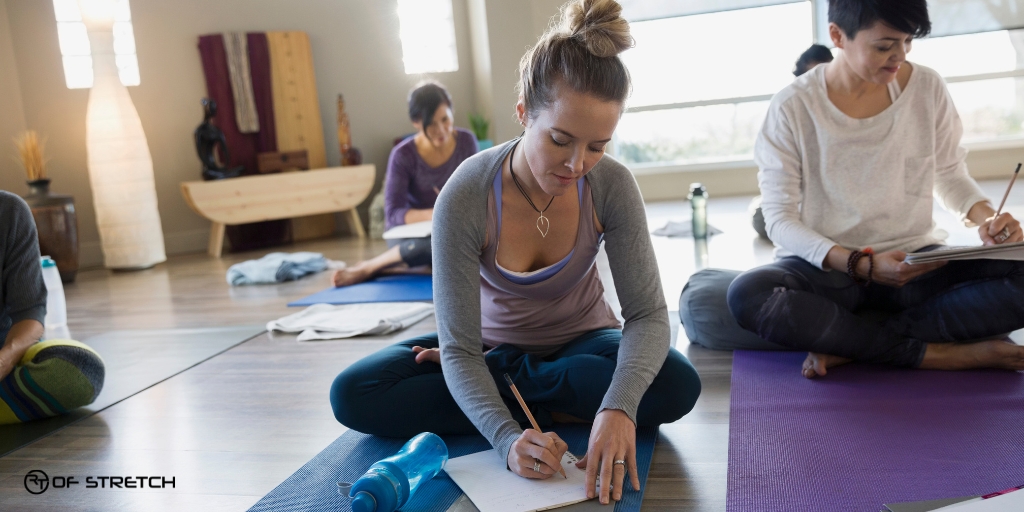New Year's Stretching Resolutions: Building a Year-Long Routine for Health
As the year begins, many look for ways to improve our health and set new goals. Stretching is one of the simplest and effective ways to enhance well-being. A New Year’s resolution to make stretching part of your routine can pay off in better flexibility, reduced stress, and improved energy.
Here’s how you can build a stretching routine that lasts all year.
Understanding the Health Benefits of Stretching
Benefits of stretching are often underestimated, but they are more than most people realize. First, it improves flexibility and range of motion, which can help prevent injuries. Even if you’re not an athlete, this is important for daily activities like bending down to tie your shoes or stretching up to grab something on a high shelf.
Beyond the physical benefits, stretching boosts mental health. It gives relaxation, reduces stress, and helps you clear your mind. Regular stretching supports better posture and muscle alignment, lowering the chance of long-term neck, back, and joint pain.
Setting Realistic Stretching Goals

Setting clear, realistic goals is the trick to making stretching part of your daily routine. Start with SMART goals—specific, measurable, attainable, relevant, and time-bound. For instance, a goal like “stretch for 10 minutes every morning for a month” is straightforward and achievable. Break it down if needed, like focusing on certain muscle groups for specific months.
The key is to avoid setting expectations that feel impossible. Begin with small goals and gradually increase them as your body gets used to stretching every day. It’s better to stretch for five minutes every day than to set a goal for 30 minutes only to give up after a week.
Creating Your Year-Long Stretching Plan

Monthly Focus Approach: One way to build a year-long plan is to break it down by month. Start January by focusing on your neck, shoulders, and back to help combat any stiffness from winter. Move to hips and hamstrings in February, which are essential for better mobility. As spring begins, include more dynamic movements to prepare your body for outdoor activities.
Weekly Routine Structure: Picking a month’s focus is not enough; create a weekly plan, too. Balance stretching with other forms of exercise, like cardio or strength training. For example, you could do dynamic and static stretches before a workout to cool down. If you’re not planning to exercise, set aside 10 minutes a day to stretch.
Daily Stretching Recommendations: The best time to stretch depends on your schedule. If mornings work for you, try waking up earlier and stretching to energize your day. Alternatively, a 10-minute session before bed can help you unwind. Choose stretches that you enjoy so that it feels less like a chore and more like a relaxing break.
Monthly Stretching Suggestions
Winter (January to March)
Focus on gentle stretches that keep muscles warm. Consider light yoga routines that help with flexibility and blood circulation. Warm up before starting to prevent stiffness.
Spring (April to June)
Focus on deep muscle stretches to prepare for more active times. As outdoor activities become more common, work on hips, hamstrings, and legs. Include stretches like lunges and standing leg stretches.
Summer (July to September)
Keep your stretches light and fluid. Longer, dynamic stretches help maintain mobility during warmer months when you are more active outdoors. Add in stretches like torso twists and side bends.
Fall (October to December)
Focus on cooling down with deeper, more restorative stretches. This is a good time to reflect on your progress and set new goals for the next year. Stretches that promote spinal flexibility and release tension in the lower back work well during this time.
Overcoming Challenges and Staying Motivated
Starting is easy; keeping up can be tough. One of the most common challenges is needing more time. If a 10-minute session feels too long, break it into smaller parts throughout the day. Stretch for 2-3 minutes in the morning, midday, and evening.
Sticking to your routine also requires motivation. Try to keep it fun by changing up your stretches every week. Add variety by using yoga, following stretching videos online, or incorporating assisted stretching to enhance your flexibility.
Celebrate your progress as you go. You can now touch your toes or hold a specific stretch for a minute longer than last month. These milestones, no matter how small, are worth acknowledging.
Expert Tips for Long-Term Success
If you feel like you’re hitting a plateau, consider adding props to your stretches, like yoga blocks or resistance bands. These can help you get deeper into stretches without risking injury. Pair your routine with other wellness practices, such as yoga or tai chi, for added benefits.
Consulting a fitness expert or stretch therapist can help you spot areas of tension or imbalance. Their advice can also be helpful if you’re unsure how to improve your routine or avoid injury.
Ready to get started on your stretching journey?
It’s easy to improve your flexibility, reduce stress, and boost your overall health throughout the year—just schedule a session today. Start your journey to a healthier, more energized you!
Conclusion
Sticking to a stretching routine all year can make a big difference in how you feel physically and mentally. Start small, stay consistent, and build up gradually. Before you know it, you’ll feel more flexible, energetic, and ready to take on the new year.
FAQs
How long should I stretch each day?
Aim for at least 10 minutes daily, but even 5 minutes can offer benefits.
What are the best stretches for beginners?
Try basic moves like neck tilts, shoulder shrugs, and hamstring stretches.
How can I stay motivated to keep stretching?
Keep it interesting by changing your routine every week and celebrating small wins. Find a friend or a group to help you stay accountable.